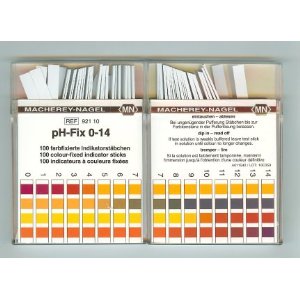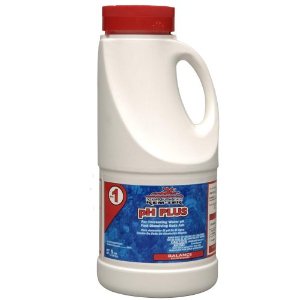Can I just test the pH of the solution to know whether I'm using enough washing soda?
Can I just test the pH of the solution to know whether I'm using enough washing soda?
Name: Rena
—ADVERTISEMENTS—
Country or region: USA
Message: I understand from the FAQ that I would need to use more washing soda than the soda ash I would be able to get from a dye supplier. Rather than guesstimate how much more, I would think I could just test the ph of the solution & if it is in the range of 11 or so, it should be okay. Am I right? Thanks. I love your website.
You're correct. For dyeing with a fiber reactive dye, such as Procion MX dye, you need to use only enough washing soda, or soda ash, to get in the right pH range. See my page, "What is the effect of pH in dyeing? What is the optimal pH?".
However, surprisingly, using only just barely enough sodium carbonate to put plain water into the right pH range will not be sufficient. Since cotton itself acts as a mild acid, the pH of a very weak solution of sodium carbonate will go down after you add the cotton to it. The same is true of other cellulose-based fibers. This means that you should test your pH after adding about the same quantity of fabric (or yarn, or loose fiber) that you will normally be dyeing in that volume of water.
Fortunately, there is a wide range of sodium carbonate concentrations that will work to produce a suitable pH, so you will do fine if you add too much sodium carbonate. A nice thing about sodium carbonate, whether you buy it as soda ash (the anhydrous or monohydrate form) or as washing soda (the decahydrate form), is that you will get close to the correct pH for most fiber reactive dyes even if you use quite a lot more or less than a standard recipe calls for.
Sodium carbonate is known as a weak base, because not all of the chemical disassociates into separate ions when dissolved. If you use only a little sodium carbonate, most of it will disassociate into separate ions, but if you add a great deal of sodium carbonate, only some of it will disassociate. As you add more sodium carbonate, your pH does increase somewhat, but not nearly as quickly as it would if you used a fully-dissociating strong base, such as sodium hydroxide (also known as lye or caustic soda). Our usual recipes for dyeing with fiber reactive dyes include sufficient excess of sodium carbonate that we normally don't have to think about this very much, in either direction.
As you saw on my page about soda ash, washing soda is weaker than soda ash only because its crystals contain a good many water molecules, in addition to the sodium carbonate molecules. Soda ash contains little or no water molecules. This means that washing soda contains less sodium carbonate, whether you measure it by cups or by weight. Perhaps the most important implication of this is that washing soda should cost less than soda ash. If you see washing soda being sold for half the price per pound of soda ash, you may at first think that it's an incredible deal, when in fact it contains less sodium carbonate than soda ash does, per pound, and therefore should cost less.
(Please help support this web site. Thank you.)
Posted: Thursday - September 08, 2011 at 10:08 AM
Follow this blog on twitter here.
Quick Links
- All About Dyes & Dyeing Top -
- Top of this blog -
- FAQ -
- The Dye Forum -
- How to Tie Dye - How to Batik -
- Books - Toys - Plants -
- Top of this blog -
- FAQ -
- The Dye Forum -
- How to Tie Dye - How to Batik -
- Books - Toys - Plants -
More in this category:
- -
Statistics
Total entries in this blog:
Total entries in this category:
Published On: Aug 29, 2012 02:49 PM
Total entries in this category:
Published On: Aug 29, 2012 02:49 PM

